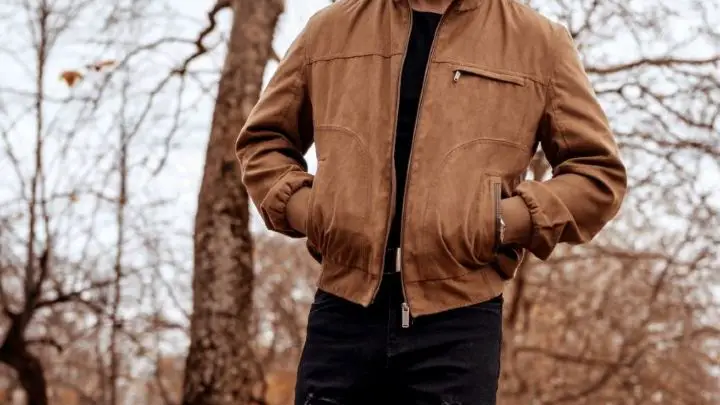Growing your hair involves you knowing your hair porosity. This has to do with how your hair can easily absorb moisture. The result will determine whether you have low porosity hair or high porosity hair.
If you are the type with low porosity hair, growing it will be tasking. But it will be worth it at the end of the day.
We won’t lie to you, growing hair can be daunting and energy-consuming. But this happens most times because you are using the wrong products or you don’t know what your hair type is.
Knowing your hair type and what it can take and what it also needs is the first step to good healthy hair growth.
When it comes to low porosity, you have to be extra careful because they need moisture.
After all, the hair shaft is very tight and moisture or water hardly gets in. So you might find yourself worried about keeping your strands, and then you have to find a way to get the products in so that they can aid your hair growth.
If you fall under this category, you need not worry, because there are healthy growth tips for low porosity hair to help get the length you want and also help with its retention.
Tips on How to Grow Low Porosity Hair

1. Clarify your hair shaft
Your low porosity hair is already tightly knit which makes product buildup easy. Your hair builds up dirt and grime with ease because only a little product is absorbed by the shaft.
The others remain on the scalp and roots. When these products build up, they cause a clog which prevents hair growth. The only thing you can do is clarify your hair shaft.
You can use a nice hair mask to remove the grime stuck in the roots of your hair. Or opt for natural methods like Apple cider vinegar to clear your hair shaft.
Make sure to use only the necessary products that would help your hair grow. Using too many products, especially thick ones, would further lead to build-ups.
And no matter how many times you clarify, you will always come back to the same heavy build-up.
2. Steam regularly
Another tip on how to grow low porosity hair is steaming regularly. Your hair needs all the help it can get to absorb moisture. One of the best methods is using a good steamer.
There are lots of reasons why you need to steam your hair, but the most important is that it helps to absorb products easily. This is because the heat from the steam opens up the cuticles, allowing for easier product absorption.
Steaming also makes your hair hydrated because the vapor turns to water when it is cooled.
And by then it has permeated every part of your hair. The vapor moves faster through the hair than normal temperature water.
3. Switch to light oils and products
One way to grow low porosity hair is to use light products and oils. If you have been using heavy oils like coconut oil, you should stop.
Switch to lighter oils like avocado oil, jojoba oil, castor oil, and baobab oil. These oils have a lighter consistency that makes it easy for them to penetrate the tight hair shaft.
Using these oils will help your hair grow and also keep it moisturized. If you wish to blend the oils, feel free to do so. But avoid blending a light oil with heavy oil.
Your products should also be on the light side. You could either buy liquid conditioners and treatments or mix them with a little water to keep the formula light.

4. Optimize your deep conditioner with heat
Heat is one of the best agents for low porosity hair. You can enhance the efficacy of your conditioner by applying heat to it.
A deep conditioner can deliver the needed moisture when you simply wear a steamer or a steam cap. You could also wear a shower cap to let the conditioner sit in the heat.
And when everything is done, wash the conditioner off with cold water to let the cuticles close back in.
5. Use products with humectants
Humectants are agents that help the hair absorb and keep moisture from the surroundings. The products that would help grow low porosity hair should have the agents as major ingredients.
Humectants like honey, glycerin, fructose, panthenol, propylene glycol, and dipropylene glycol are great humectants that would help attract moisture to the hair from its surroundings.
6. Moisturize regularly
This is one of the most important tips on how to grow low porosity hair. This is because the hair shaft is dense and the cuticles are overlapping.
Which means the hair needs lots of moisture constantly. Moisture helps the hair to stay strong, soft, and easy to style.
The natural oil your hair produces is not enough for low porosity hair to keep itself moisturized. It needs help, as stubborn as it may be.
You can use the liquid-oil-cream format to keep your hair constantly moisturized. You moisturize your hair with water, then apply oil to seal the water in, and then use a cream treatment to keep the moisture loss minimum.
7. Stay away from silicones
Silicones are hydrophobic synthetic polymers that serve as a coat on the hair and prevents moisture penetration.
They can be found in some hair products like shampoos and conditioners. This might not affect other porous hair types but it will affect low porosity hair since it needs all the moisture it can get.
Low Porosity Hair FAQs

What is low porosity hair?
Low porosity hair simply means the hair cuticles overlap and become tightly packed, leaving little to no room for water or moisture to be absorbed into the hair shaft.
This hair type naturally repels moisture and its related products. It would be difficult for products like conditioners, oils to penetrate the hair shaft. This makes it hard to style the hair because of its tendency to not let water in.
Also, with low porosity hair, washing becomes a task because it takes a while before the shampoo and water set into the hair.
And it takes a long time to dry. This type of hair is caused by genetics. It is usually passed down but can become easy to treat when heat is applied.
This is because heat forces the cuticles open, allowing a brief window for moisture to penetrate the shaft.
How do I know I have low porosity hair?
You need to carry out a porosity test to determine how porous your hair is. There are different tests and telling signs that will help you find what type of hair you have. The simplest is the water-cup test.
You can follow these steps:
- Take a few strands of your hair and drop them into a clear glass of water.
- Watch the hair react.
- If it sinks immediately, it is high porosity. If it sinks to the middle for a while before sinking in, then it is normal. And if it floats for a while before finally sinking, it is low porosity.
Also, you can check the reaction of your hair when you wash it. If you notice water forms into beads before finally sinking into the hair, you likely have low porosity hair.
Does low porosity hair break easily?

Yes, it does. Low porosity hair is characterized by dry brittle hair. It is hard for moisture to penetrate the shaft, making the hair hard and prone to split ends and breakage at the end of the line.
That is why keeping the hair moisturized always will help it stay healthy. But this doesn’t mean low porosity is always dry and brittle.
Some low porosity hairs look fine, shining, and healthy even. For healthy-looking low porosity hair, what you have to take note of is the products and heat application to the hair.
You should use heat moderately to avoid your hair shifting porous levels. One of the things that can cause high porosity is excess heat. We have previously discussed high porosity and you can find other factors that cause it.
Do proteins affect low porosity hair growth?
Yes, it does. The hair shaft contains a type of protein called keratin. The keratin protein makes the hair strands stronger.
For low porosity hair, there is more than enough protein in the shafts, which makes it protein-sensitive. If you are using penetrating products that contain protein, it will be best to stop.
This is because protein products make the hair strands stiff and brittle, causing breakage if continued.
But this should not stop you from eating foods containing proteins. Natural proteins from foods will help your hair growth.

What products should I use for my low porosity hair?
Shampoos
Your shampoo has to be protein-free. You can also use sulfate-free shampoo for your hair’s natural oil. The shampoo must also not leave residues.
For instance, Auntie Jackie’s Oh So Clean Shampoo is not only sulfate-free, but it is also a great moisturizing and softening ingredients agent.
Leave-in conditioners
Leave-in conditioners are great for moisturizing and keeping the hair hydrated. You should use conditioners that contain humectants like glycerol that would absorb moisture from the air.
This way your hair keeps staying moisturized. Innersense Organic Beauty Sweet Spirit Leave-In Conditioner contains humectants like aloe vera and glycerin. This will help your hair stay moisturized.
Hair masks
Whether they are homemade or store-bought, the best hair masks help to deeply treat hair, moisturizing, shining and softening the hair.
Low porosity hair is characterized as dry and brittle, therefore they need as many moistures as they can get. TGIN’s hair mask formula with rose water will smoothen and moisturize dry low porosity hair.
Hair oils
Lighter-based oils will be easily absorbed in low porosity hair. Oils like avocado oil, jojoba oil, and castor oil are good hair oils that will penetrate easily into the hair shafts.
You can try Now Solution’s natural jojoba oil for all types of hair and skin to get your hair the moisture it needs.
Conclusion
Growing your low porosity hair means you have to keep it moisturized and nourished. You can use heat to open up your hair shafts to help products penetrate them.
You should also make sure to stay away from proteins because low porosity hair has more than enough keratin in the shafts.
Always remember to use oils to also keep your hair moisturized. Oils like coconut oils, avocado oils, jojoba oils, and essential oils help the hair stay moisturized and hydrated.
Knowing all these will not guarantee your hair to grow if you are not disciplined with your hair routine. You can only see a difference if you put in the effort. If you do this, you will grow your low porosity hair as organically as possible.
Africana Fashion provides you with the beauty articles you need to cultivate a healthy beauty and hair lifestyle.










